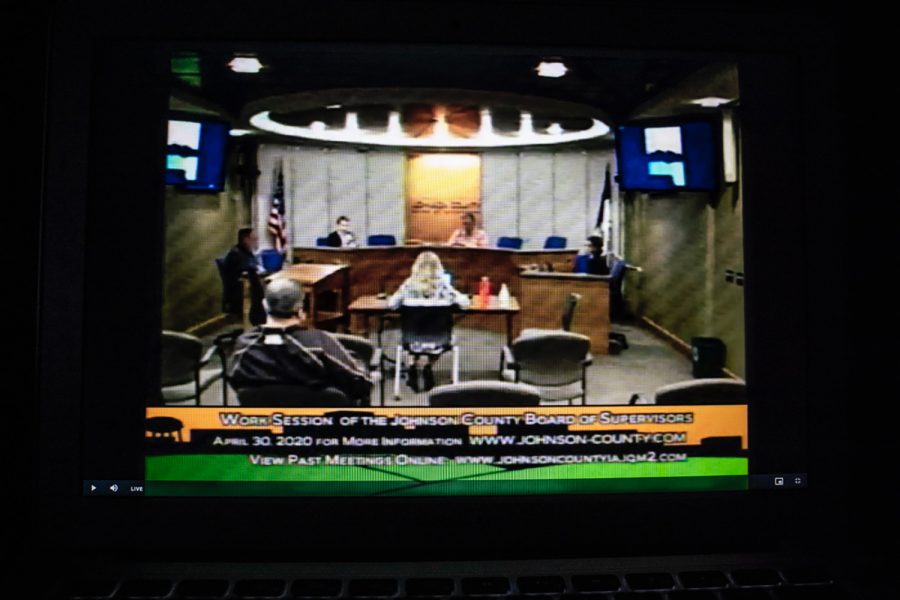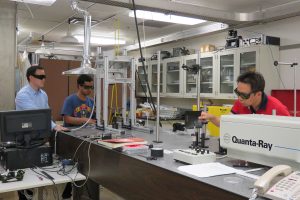Johnson County Historic Poor Farm to add wellness trail
During the board’s Wednesday work session, representatives of the Historic Poor Farm presented their monthly update about planned changes for the property.
Johnson County supervisors hold a work session over live-stream on Wednesday, April 29, 2020.
April 29, 2020
Johnson County Historic Poor Farm will soon add a wellness trail, produce washing station, and temporary electric deer fence for the property, representatives presented to the Johnson County Board of Supervisors at a work session on Wednesday.
The new quarter-mile wellness trail will move through and around the buildings on the northwest side of the property and connect to the larger existing trail that encompasses the entire farm.
While designing a plan for the trail, Backyard Abundance, an environmentally friendly landscape company, sent out a survey to the community to collect information for future trail visitors to see what people wanted and needed Historic Poor Farm to include. The survey’s feedback provided a structure for the trail’s goals, which are to make it accessible, engaging, and educational of the farm’s food and history while still retaining function and beauty.
“We really focused on these folks and the things that they wanted to do – it really drove the design,” Backyard Abundance Founder Fred Meyer said. “We didn’t have a rough opinion of what we wanted the design to be, it really focused in on who was going to be there and what they were going to do.”
He said that the trail will link the engaging features — the heart — of the farm together.
The additional produce washing station will be the second station on the farm and will be set-up adjacent to the first on the northeast side of the property. A gravel floor, hydrants, improved drainage, additional washing and packing space, as well as larger dunk tanks will be included with the new station.
Iowa Valley Resource and Conservation and Development Deputy Director Jason Grimm said the reasoning for the new fence is that many tenants on the farm had approached him with concerns about deer traffic along the northwest corner of the property. The corner rests beside a timbered area that has high levels of deer and he said there has been an increase in traffic on that side of the farm compared to last spring.
In response to these concerns, a temporary electric fence — costing approximately $4,500 — will be constructed, encompassing the north, west, and south sides of the farm and have two entrances.
Deer don’t have good depth perception, Grimm said, so there will be two lines of fence. One will have a double strand of wires 18 inches and 48 inches above the ground while the second line of fence will sit three feet back with a single strand of wires at 34 inches.
“This is a fence that we can put up and take down each year. We can modify its alignment each season as well based off of where tenants are renting or planting cash crops,” Grimm said. “This is the best way to persuade the deer to go around the fields instead of through the fields [without] dissuading them off the farm completely.”






